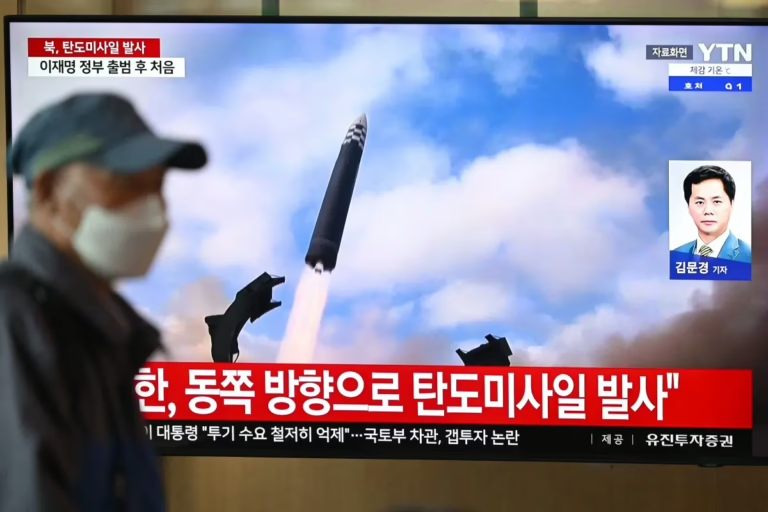On Wednesday, October 22, North Korea conducted a series of ballistic missile launches, marking its first such activity in several months. This development comes just days before a major summit in South Korea, which will be attended by global leaders including US President Donald Trump.
According to South Korea’s Joint Chiefs of Staff, several projectiles, believed to be short-range ballistic missiles, were detected. The missiles were launched at approximately 8:10 a.m. local time (2310 GMT Tuesday) from a location south of Pyongyang, traveling an estimated distance of 350 kilometers (217 miles).
This missile test is notable as it is the first since the inauguration of South Korean President Lee Jae-myung in June.
The timing of the launch is significant, coinciding with President Trump’s scheduled arrival in South Korea on October 29 for the Asia-Pacific Economic Cooperation (APEC) Forum. Trump has expressed interest in meeting North Korean leader Kim Jong Un again, potentially within this year, following their three nuclear-stockpile-seoul/” title=”Seoul Warns: … Rapidly Expanding … Weapon Stockpile”>high-profile summits during his first term.
North Korean state media has recently signaled Kim’s willingness to engage in further dialogue, provided the United States abandons its “unrealistic” demand for complete denuclearization. In September, Kim reflected positively on past meetings with Trump and indicated openness to another encounter, stating, “If the United States relinquishes its delusional fixation on denuclearization and, acknowledging reality, genuinely seeks peaceful coexistence with us, then there is no reason we cannot meet.”
Expert analysis from Park Won-gon, a professor at Seoul’s Ewha Womans University, suggests the missile launch serves as a strategic message to President Trump and his recent diplomatic efforts. Park noted that Kim Jong Un is reaffirming his regime’s visibility during a high-profile event hosted by Seoul, a tactic he has employed previously.
Despite enduring ongoing United Nations sanctions targeting its nuclear and missile programs, North Korea continues to enhance its military capabilities. Earlier this month, the regime unveiled the Hwasong-20, which it described as its “most powerful” intercontinental ballistic missile, during a military parade attended by senior officials from Russia and China. Pyongyang asserted that the missile’s strike range is effectively limitless.
In September, Kim supervised the ninth and final test of a solid-fuel engine designed for long-range nuclear missiles, signaling that a full-scale test launch of a new ICBM could be imminent.
North Korea has consistently maintained that it will not relinquish its prohibited weapons and has instead sought to strengthen diplomatic and military ties with traditional allies China and Russia.























0 Comments